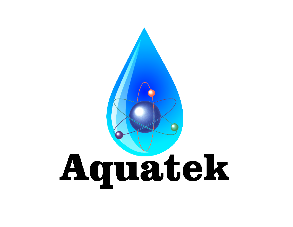UV Sterilization for killing bacteria and pathogens in water
UV Sterilization
Ultra Violet – UV sterilization units to kill harmful bacteria and pathogens

The Water Quality Association says, “UV, like distillation, disinfects water without adding chemicals, and therefore possesses some of the same benefits as distillation. It does not create new chemical complexes, nor does it change the taste or odor of the water, and does not remove any beneficial minerals in the water. Ultraviolet devices are most effective when the water has already been partially treated, and only the cleanest water passes through the UV flow chamber. UV devices are therefore often combined with other technologies such as carbon filters, water softeners, and reverse osmosis systems to provide complete water quality solutions.”
The concept of UV disinfection is something found in nature. The same UV light used to purify drinking water is contained in the sun’s powerful rays. These rays disinfect the waters all over our globe every day.

Ultra Violet Sterilizer Standard Features:
- Stainless Steel Reaction Chamber
- Waterproof Lamp Connection
- Easy bulb replacement w/o turning off water to UV
- Mounting hardware included
- 2 yr. limited warranty
- Weather Resistant box on 8gpm and larger for outdoor installation
UV sterilizer Optional Features:
- UV Intensity Meter
- UV Intensity Shut down
- UV Intensity Alarm
UV’s Kill Harmful Bacteria and Other Pathogens Including:
- E.coli
- Coliform
- Legionella
- Cholera
- Streptococcus
- Tuberculosis
- ryptosporidium
- Giardia
- Staphylococcus
- Mold
- Hepatitis
- Influenza
Ultra violet (UV) applications per ultraviolet wavelengths
Deciding which wavelength to use to best match your application.

Longwave UV – 365nm
-
- Laboratory/ResearchBacterial Identification * Specimen Staining * Gel Electrophoresis * Chlorination * Fluorochemistry * Pesticide Analysis * Fluorescence Photography * Titration Processes * TLC * Nucleic Acid Visualization * Genetic Experiments * Virology Sanitation: Aflatoxin Detection * Rodent Contamination and Lice Detection * Detection of Food Contamination * Milkstone Inspection * E-Coli Water Testing * Culture Fluorescence Medical: Medical Diagnosis * Dermatology * Cosmetology
-
- EducationFluorescence Demonstration and Analysis
-
- IndustrialNon-Destructive Testing * UV Curing * Magnetic Particle Inspection * Inspection of Conformal Coatings
-
- CriminologyDetection of Altered Documents * Counterfeit Currency Detection * Signature Verification * Forensic Applications * Coding/Marking * Arson Investigation * Lab Testing
-
- ElectronicsClean Room Inspection * Epoxy Coat * Quality Control * Inspection
-
- MiscellaneousExamination of Fine Art * Archaeology * Entomology * Photoresist Exposure * Philately * Re-Admission Control * Mineralogy
- AutomotiveLeak Detection * Windshield Repair
Midrange UV – 302nm
-
- ResearchGel Electrophoresis * Gel Viewing * Optical Lab Measurements
-
- IndustrialUV Curing * Gradient Sampling * Solar Experimentation
-
- MedicalPhototherapy * Dermatological
- MiscellaneousMineralogy * Art and Museum Inspection
Shortwave UV – 254nm
-
- CriminologyDocument Examination * Field Clue * Arson Investigation * Toxicology
-
- EducationFluorescence Demonstration and Analysis
-
- Laboratory/ResearchFluorochemistry * Mercury Detectors * Optical Alignment * Pesticide Analysis * Polymer Curing * Sterilization * DNA Analysis * Biochemical Testing * Electrophoresis * TLC * Mutation * Mycology * Nucleic Acid Visualization * Photochemistry * Photo Disassociation
- MiscellaneousE-Coli Testing * Alumina Testing * Archaeology * Fluorescence Photography * Mineralogy * Philately
